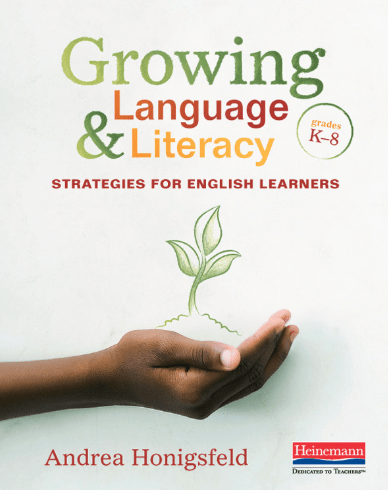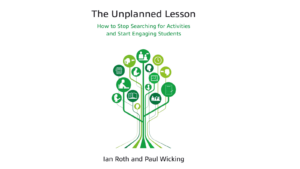
Book Review
Dominica R. Felici-Skal
LDT-C
Andrea Honigsfeld has created a user-friendly resource book that provides excellent support for English learners in K-8 (kindergarten/pre-K to 8th grade) classrooms. This book is useful for both novice and experienced teachers.
Honigsfeld discusses the five basic premises of language development based on the TESOL (Teaching English to Speakers of Other Languages) standards. Her strengths-based philosophy approach to language acquisition is embodied in her recognition that likenesses unite while differences enrich. Honigsfeld presents evidence of individual variations through the recognition that dual-language learners should bring their native language and culture into their learning environment. As a result, culturally and linguistically sustaining instructional and assessment practices are formulated into classrooms as content, language, and literacy are integrated. Through mission-based peer-to-peer, peer-to-teacher, and teacher-to-teacher interaction as well as collaboration, cumulative multimodal communication is formed. In essence, communication is multimodal as demonstrated through the use of language, gesture, posture, and other non-verbal modes often at the same time to communicate.
Honigsfeld depicts a can-do attitude as she demonstrates a positive approach through K-8 instructional practices and classroom work samples. Each chapter is organized into one of the five levels in the language acquisition: starting, emerging, developing, expanding, and bridging which tap into each of the four key language domains: listening, speaking, reading, and writing. At the end of each chapter, general instructional practices are listed under the following categories: visual supports, learning by doing, oral language production, reading supports, and writing supports.
Although the author includes actual pictures of students to represent vocabulary words and impressive multisensory student work samples that could be used in the classroom, the book could have elaborated more on the utilization of explicit, systematic structured literacy instruction (Moats, 2019). For example, the finger strategy (Greene & Enfield, 1994) for decoding and encoding words could be also be a useful method for classroom use. The thumb is applied to the first sound(s) in every syllable. Second, the index finger is applied to vowel sound in every syllable. Lastly, the middle finger is applied to last sound in every syllable. The process would begin with the thumb for the first sound in the second syllable for multi-syllabic words.
Honigsfeld facilitated an enriching discussion of the learner’s zone of proximal development or instructional level within her book. The linguistic technique such as the finger decoding and encoding method would be a great discussion to include as independent readers and writers are developed through this strategy. Growing Language and Literacy: Strategies for English Learners is recommended as an outstanding resource of foundational concepts, recognition of diverse reading profiles and ethical standards for the pedagogy of culturally and linguistic responsiveness (Moats, 2019).
Honigsfeld made her research directly accessible for teachers, coaches, and staff developers while primarily focusing on effective differentiated instruction and collaborative practices. Colleagues are certain to see this wonderful resource on the desks of English as a Second Language, general education teachers, intervention teachers as well as special education teachers as they will be positively supporting collaboration and co-teaching experiences. Growing Language and Literacy: Strategies for English Learners is an excellent, hands-on, pedagogical application of what teachers can do with their students together.
References
- Greene, V. E., & Enfield, M. L. (1994). Linguistics Guide: Designing reading instruction for intermediate and secondary students. Bloomington, MN: Language Circle Enterprises.
-
- Moats, L. (2019). Louisa Moats webinar video. Retrieved from




